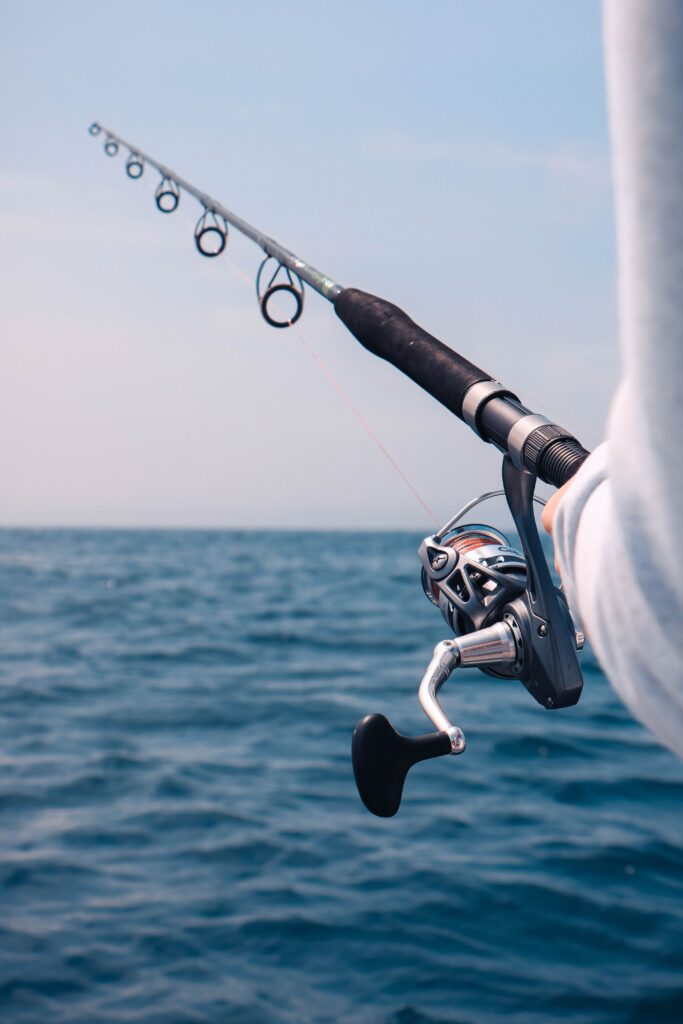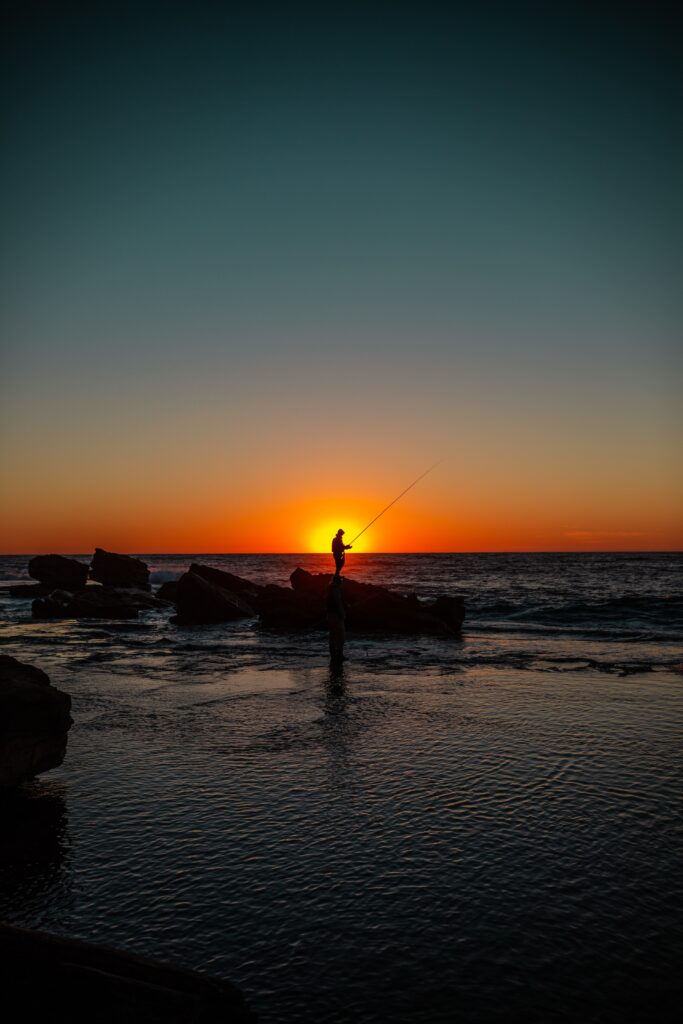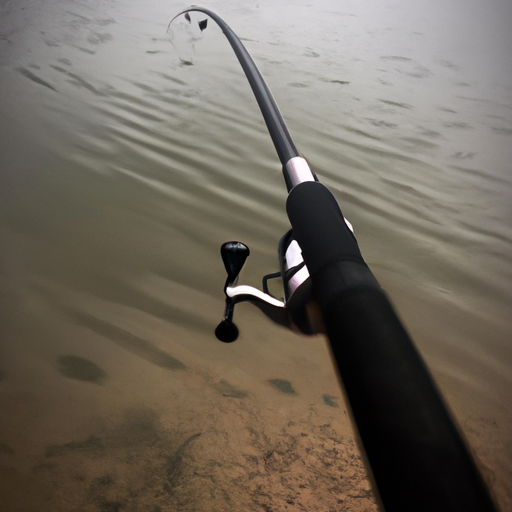If you’ve ever found yourself staring into murky waters, unsure of how to go about fishing in such conditions, then “Tips for Fishing in Muddy Waters: A Guide for Starters” is just what you need. This comprehensive guide is designed to provide beginners with valuable tips and techniques on how to navigate the challenges of fishing in muddy waters. From choosing the right lures to utilizing effective casting techniques, this guide has got you covered. So, gear up, grab your fishing rod, and get ready to conquer the muddy waters with confidence!

Understanding Muddy Waters
Definition of Muddy Waters
Muddy waters refer to bodies of water that have increased turbidity due to the presence of suspended particles, such as sediments, algae, or other debris. This phenomenon causes the water to become murky, making visibility underwater significantly reduced. Muddy waters can occur in various aquatic environments, including rivers, ponds, lakes, and even coastal areas. Fishing in such conditions can present unique challenges, but with the right knowledge and techniques, you can still have a successful fishing outing.
Causes of Muddy Waters
There are several factors that can contribute to the muddy appearance of water bodies. Heavy rain or melting snow can wash the soil and sediment into rivers and lakes, quickly turning the water murky. Construction, agricultural activities, and even nearby boat traffic can also disturb the bottom sediments and stir them up, leading to increased turbidity. In some cases, natural occurrences like algal blooms can cause water to become cloudy as well. Understanding the causes of muddy waters can help you anticipate when these conditions are likely to occur and plan your fishing trips accordingly.
Impact on Fishing
Fishing in muddy waters presents a unique set of challenges for anglers. Reduced visibility makes it more difficult for fish to see your bait or lure, and they may rely more on other senses, such as smell or vibration, to locate food. In muddy waters, fish tend to stay closer to structure and cover for protection and to ambush their prey. They may also alter their feeding habits and become more cautious. However, despite these challenges, fishing in muddy waters can still be productive if you adjust your techniques and adapt to the conditions.
Choosing the Right Gear
Rod and Reel Selection
When fishing in muddy waters, it’s important to choose a rod and reel combination that suits the type of fish you are targeting and the fishing techniques you plan to use. A medium to heavy-action rod with a fast tip is generally recommended. This will provide the necessary sensitivity to detect bites and the power to control larger fish. Pair your rod with a reel that has a smooth drag system and is capable of holding enough line for the type of fishing you are doing.
Line Selection
Selecting the right fishing line is crucial when fishing in muddy waters. A braided line with a high visibility color, such as yellow or chartreuse, can help you keep track of your line in the murkiness. Braided lines also have a thinner diameter, allowing them to cut through the water more efficiently. However, if you prefer using monofilament or fluorocarbon line, consider choosing a high-visibility color to make it easier to detect subtle line movements.
Bait and Lure Considerations
In muddy waters, fish may rely more on their other senses to locate food. Choosing baits and lures that create strong vibrations or emit attractive scents can increase your chances of getting a strike. Soft plastic baits with paddle tails or other appendages that create water movement are great choices. Crankbaits with rattles or spinnerbaits that produce both sight and sound can also be effective in attracting fish in murky water conditions.

Enhancing Visibility
Using Brightly Colored Baits
One effective way to enhance visibility and increase the chances of attracting fish in muddy waters is by using brightly colored baits. Opt for colors like chartreuse, orange, or even white, as they tend to stand out more in murky conditions. The bright colors can help fish locate your bait easier, increasing the likelihood of getting a strike. Experiment with different colors to determine which ones work best for the specific fish species you are targeting and the prevailing water conditions.
Adding Attractants
Adding attractants to your bait or lure can be a game-changer when fishing in muddy waters. Attractants are substances that produce scents or flavors that mimic natural prey items, making them irresistible to fish. Some common attractants for freshwater fishing include garlic, anise, or shrimp scents. Apply attractants to your bait or lure prior to casting to disperse the scent and entice fish to strike. This technique can help compensate for the reduced visibility in muddy waters.
Utilizing Flashing Techniques
In conditions of low visibility, utilizing flashing techniques can significantly increase your chances of catching fish. Flashing lures or lures with reflective elements, such as spinnerbaits or spoons, can mimic the appearance of a distressed or injured baitfish. The flashes of light produced by these lures can attract fish from a distance, even when the water is muddy. Experiment with different retrieval speeds and variations in flashing patterns to determine what works best for the fish species you are targeting.
Focus on Structure and Cover
Importance of Structure and Cover
In muddy waters, fish will often seek refuge in areas of structure and cover. These areas provide them with protection from predators and also serve as prime hunting grounds. Structures like fallen trees, rock formations, bridge supports, and submerged vegetation are good places to start your fishing efforts. Additionally, areas with cover such as lily pads, grass beds, or submerged vegetation provide excellent hideouts for fish. Familiarizing yourself with the importance of structure and cover will help you identify productive fishing locations in muddy waters.
Identifying Key Features
When fishing in muddy waters, it’s essential to identify key features within the structure or cover that attract fish. Look for irregularities or changes in the structure, such as bends in fallen trees, gaps in rock formations, or openings in vegetation mats. These features serve as ambush points for fish, allowing them to hide and surprise their prey. By targeting these specific areas where fish are likely to be hiding, you can increase your chances of a successful catch.
Casting Techniques in Structure
To maximize your chances of landing fish in muddy waters, employ casting techniques that allow you to effectively navigate through structure and cover. Accurate casting is essential, as you want to place your bait or lure as close to the target area as possible without getting snagged. Depending on the depth and type of structure, techniques like flipping, pitching, or using weedless rigs may be necessary. Practice these techniques to improve your accuracy and reduce the likelihood of getting tangled.

Adjusting Your Technique
Slowing Down Your Retrieval
In muddy waters, fish may have a harder time locating and tracking fast-moving baits or lures. Slowing down your retrieval speed can make your bait or lure more visible and give fish more time to strike. Retrieve your bait or lure at a pace that allows it to move naturally but at a slower speed than you would in clearer waters. This will make it easier for fish to detect and react to your presentation, increasing your chances of a successful hook-up.
Employing Bottom Bouncing
When fish are skittish or hesitant to strike in muddy waters, employing a bottom bouncing technique can be effective. This technique involves casting your bait or lure and allowing it to sink to the bottom. Once it reaches the bottom, lift your rod tip slightly and then drop it back down, causing the bait to bounce or hop along the bottom. This action mimics a wounded or feeding prey item and can trigger a strike from nearby fish. Experiment with different lengths and intervals between lifts and drops to find the right rhythm.
Using Trapping Techniques
Another technique that can be effective in muddy waters is trapping. This involves using bait or lures that are stationary or have minimal movement. Since fish may rely more on their sense of smell or vibration in murky waters, trapping techniques allow your bait or lure to stay in one place, increasing the chances of attracting fish. Techniques like Carolina rigging, drop shotting, or using slip bobbers can be effective in trapping fish. Take note of any bites or movements on your line, as fish may strike more subtly in muddy waters.
Understanding Fish Behavior
Changes in Feeding Habits
Muddy waters can significantly impact fish behavior, particularly their feeding habits. In these conditions, fish may become more cautious and less likely to aggressively chase down fast-moving prey. They may opt to feed on slower-moving or stationary prey items to conserve energy. Additionally, fish may rely more on their senses of smell and vibration to locate food since visibility is reduced. Understanding these changes in feeding habits can help you adjust your fishing techniques to match the behavior of the fish you are targeting.
Preferred Shelter Spots
When fishing in muddy waters, it’s important to understand where fish seek shelter or hideouts. Fish will often gravitate towards structures or areas with cover that provide them protection and ambush opportunities. Fallen trees, boulders, docks, or areas with submerged vegetation are all potential shelter spots for fish. By identifying these preferred locations, you can increase your chances of finding fish in murky conditions.
Migration Patterns
Muddy waters can also influence fish migration patterns. Some fish species may avoid moving through areas of high turbidity altogether, while others may use these conditions to their advantage. Understanding the migration patterns of the fish you are targeting can help you determine where they are likely to be during different times of the year and adjust your fishing strategies accordingly. Pay attention to any changes in water conditions, as they can influence fish behavior and movement.

Being Patient and Persistent
Importance of Patience
Patience is key when fishing in muddy waters. The reduced visibility can make it more challenging to locate fish, and it may take some time before you get a bite. It’s important to trust your instincts, be patient, and maintain a positive attitude. Keep experimenting with different techniques, baits, and locations until you find what works best for the current conditions. Remember, even in murky waters, fish are still present, and with a little patience, you can increase your chances of hooking into a trophy fish.
Trying Different Locations
If you’re not having any luck in one location, don’t be afraid to try different spots. Muddy waters can create unpredictable fishing conditions, and fish may be more concentrated in certain areas. Move around the body of water, exploring different points, bays, or stretches of water until you find fish. Pay attention to signs of fish activity, such as splashing, feeding birds, or fish jumping, as these can indicate the presence of fish in the area.
Adapting to Changing Conditions
Muddy waters can be constantly changing, especially after heavy rain or during periods of high runoff. Adapting to these changing conditions is crucial for successful fishing. Keep an eye on water levels, temperature, and weather patterns that can impact water clarity. Adjust your techniques and bait selection accordingly, and be prepared to change your approach as needed. The ability to adapt to changing conditions is a valuable skillset that will improve your chances of success in muddy waters.
Monitoring Water Conditions
Water Clarity Testing
Monitoring the clarity of the water is essential when fishing in muddy conditions. Carry a small container or jar with you and collect a sample of the water. Allow the sediment to settle, and observe how quickly or slowly the water clears up. This will give you an indication of the current water clarity and help you determine which techniques and baits may be most effective. Use this information to make informed decisions about your fishing approach.
Current Speed and Direction
The speed and direction of the current can significantly impact fishing in muddy waters. Take note of how fast the water is flowing and in which direction it is moving. Fish tend to congregate in areas where the current is weaker or breaks, such as eddies or behind structures. By understanding the current patterns, you can position yourself in strategic locations that increase your chances of intercepting fish as they move along with the flow.
Temperature Considerations
Water temperature plays a vital role in fish behavior and can influence their feeding patterns. Knowing the water temperature is crucial for determining the best times to fish and the type of fish you are likely to encounter. Fish are cold-blooded creatures, and their activity levels can vary depending on the temperature. Use a digital thermometer to measure the water temperature and keep track of any changes. This information will help you make informed decisions about when and where to fish.

Safety Precautions
Use of Polarized Sunglasses
When fishing in muddy waters, it’s essential to prioritize your safety. One safety precaution that is often overlooked is wearing polarized sunglasses. These sunglasses not only protect your eyes from harmful UV rays but also help you see through the water better. They reduce glare and improve visibility, allowing you to spot underwater hazards more easily. Polarized sunglasses can also make it easier to see fish movement, structure, and cover in murky waters, reducing the risk of accidents while fishing.
Awareness of Surroundings
Maintaining awareness of your surroundings is crucial when fishing in muddy waters. Reduced visibility can make it difficult to spot obstacles both above and below the water’s surface. Be mindful of overhanging branches, rock formations, or other hazards that could pose a risk. Keep a safe distance from other anglers or boaters to avoid collisions. Being aware of your surroundings will help you navigate safely and enjoy a hassle-free fishing experience.
Navigating with Caution
If you are fishing from a boat in muddy waters, navigating with caution is imperative. Muddy waters can hide submerged objects, sandbars, or shallow areas that could damage your boat or cause accidents. Reduce your speed and be extra vigilant when operating your boat. Regularly check your depth finder or fishfinder to ensure you have a clear understanding of the underwater topography. Taking the necessary precautions will help ensure a safe and enjoyable fishing trip.
Seeking Local Knowledge
Local Fishing Reports
One of the best sources of information when fishing in unfamiliar muddy waters is local fishing reports. These reports, often available from tackle shops, fishing forums, or online resources, provide valuable insights into recent fishing activity, water conditions, and successful techniques. Reading local fishing reports before your trip can give you a head start in understanding the behavior and patterns of fish in muddy waters. Pay attention to the dates of the reports, as conditions can change rapidly in muddy waters.
Consulting Experienced Anglers
Experienced anglers who fish regularly in the area you plan to fish can offer valuable insights and advice. They have firsthand knowledge of specific spots, techniques, and bait choices that have proven successful in muddy waters. Strike up conversations with local anglers or join fishing clubs and organizations to connect with experienced individuals. Most anglers are friendly and willing to share their knowledge, so don’t hesitate to ask questions and learn from their years of experience.
Joining Fishing Forums
Joining online fishing forums can be another valuable resource for understanding fishing in muddy waters. These forums are populated by anglers from all over the country who share their experiences, tips, and techniques. You can find specific threads or discussions dedicated to fishing in muddy waters. Participating in these forums allows you to ask questions, get advice, and learn from a diverse community of experienced anglers. Take advantage of this online resource to expand your knowledge and improve your fishing skills.
In conclusion, fishing in muddy waters may present unique challenges, but with the right techniques and knowledge, it can still be a rewarding experience. Understanding the causes of muddy waters, selecting the right gear, enhancing visibility, focusing on structure and cover, adjusting your fishing techniques, and being aware of fish behavior are all essential aspects to consider. By monitoring water conditions, practicing safety precautions, seeking local knowledge, and being patient and persistent, you can increase your chances of success when fishing in muddy waters. So grab your gear, apply these tips, and embark on your next fishing adventure with confidence. Happy fishing!





